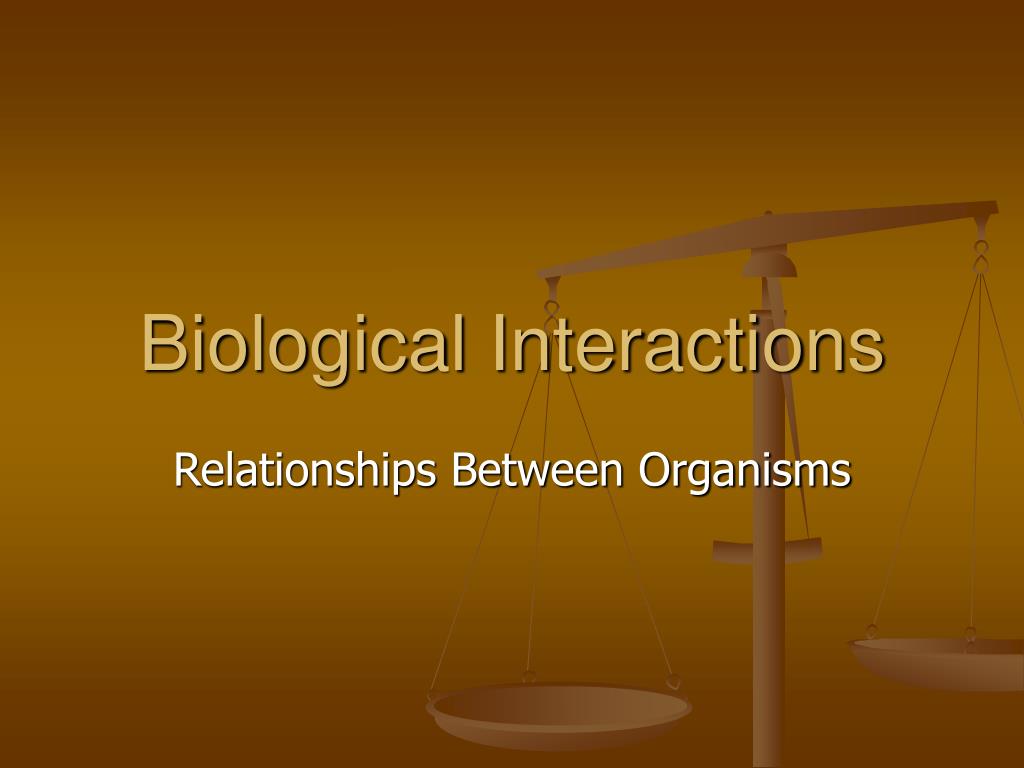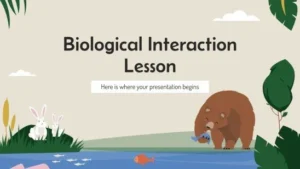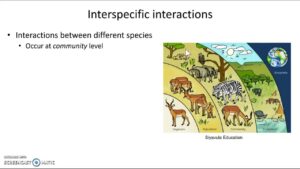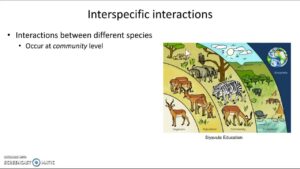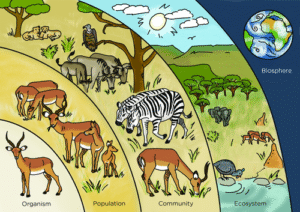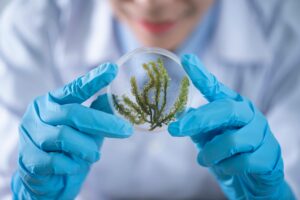Biological Interactions: The Web of Life
Life on Earth does not exist in isolation. Every organism, from the smallest microbe to the largest whale, is interconnected through a vast network of relationships known as biological interactions. These interactions shape ecosystems, drive evolution, and determine the survival of species. Understanding biological interactions is essential for grasping how ecosystems function and how human activities impact the delicate balance of nature.
In this article, we will explore the concept of biological interactions, their major types, examples across different ecosystems, and their significance for biodiversity and sustainability.
What are Biological Interactions?
Biological interactions refer to the various ways in which organisms affect each other within an ecosystem. These interactions can be beneficial, harmful, or neutral, depending on the relationship between the species involved. They occur at multiple levels—between individuals, populations, communities, and even ecosystems.
The interactions are not random; they evolve over time as species adapt to their environments and to one another. For example, flowers and pollinators co-evolved to benefit mutually, while predators and prey evolved strategies and counter-strategies for survival.
Major Types of Biological Interactions
Biologists categorize biological interactions into several types based on whether the relationship is positive, negative, or neutral for the organisms involved.
1. Mutualism (Win-Win Relationship)
In mutualism, both species benefit from the interaction. This is one of the most important forms of biological interaction because it enhances the survival and reproduction of both partners.
-
Examples:
-
Bees and Flowers: Bees obtain nectar for food, while flowers get pollinated.
-
Clownfish and Sea Anemones: Clownfish find shelter among the stinging tentacles of sea anemones, while they protect the anemones from predators.
-
Mycorrhizal Fungi and Plants: Fungi provide plants with nutrients from the soil, while plants supply the fungi with carbohydrates.
-
Mutualism is crucial in maintaining biodiversity and ensuring the continuation of many ecological processes.
2. Commensalism (One Benefits, the Other Unaffected)
In commensalism, one organism benefits while the other is neither harmed nor helped.
-
Examples:
-
Barnacles on Whales: Barnacles attach to whale skin, gaining mobility and access to nutrient-rich waters, while whales are unaffected.
-
Epiphytic Plants on Trees: Orchids or mosses grow on trees to access sunlight without harming the tree.
-
Though seemingly minor, commensal relationships add complexity to ecosystems and often serve as stepping stones toward more intricate interactions.
3. Parasitism (One Benefits, the Other is Harmed)
In parasitism, one organism (the parasite) benefits at the expense of another (the host).
-
Examples:
-
Tapeworms in Humans: Tapeworms absorb nutrients from the human digestive system, weakening the host.
-
Mistletoe on Trees: Mistletoe extracts water and nutrients from trees, harming their growth.
-
Ticks and Mammals: Ticks feed on blood, transmitting diseases to the host.
-
Parasitism influences population dynamics by regulating host populations and driving evolutionary adaptations like immune defenses.
4. Predation (Killing and Eating Another Organism)
Predation occurs when one organism (the predator) hunts, kills, and consumes another (the prey).
-
Examples:
-
Lions hunting zebras in the savannah.
-
Spiders catching insects in webs.
-
Owls preying on rodents.
-
Predation is a powerful force in ecosystems, shaping population sizes, influencing behavior, and driving natural selection.
5. Herbivory (Plants as Food Sources)
In herbivory, animals feed on plants. Unlike predation, herbivory does not always kill the plant, though it can weaken or damage it.
-
Examples:
-
Cows grazing on grass.
-
Caterpillars eating leaves.
-
Elephants stripping bark from trees.
-
Plants have evolved defenses against herbivores, such as thorns, toxins, and tough leaves, while herbivores have developed counter-adaptations to feed efficiently.
6. Competition (Both Lose Resources)
Competition arises when organisms vie for the same limited resource—food, space, water, light, or mates.
-
Intraspecific Competition: Occurs between individuals of the same species. Example: Two oak saplings competing for sunlight in a dense forest.
-
Interspecific Competition: Occurs between different species. Example: Lions and hyenas competing for prey in the African savannah.
Competition shapes ecosystems by limiting population growth, determining community structure, and influencing evolutionary pathways.
7. Amensalism (One Harmed, the Other Unaffected)
In amensalism, one organism is harmed while the other remains unaffected.
-
Examples:
-
Large trees shading smaller plants, reducing their access to sunlight.
-
Penicillin-producing fungi secreting chemicals that kill surrounding bacteria.
-
Though less common, amensalism highlights how organisms can unintentionally harm others through their natural processes.
8. Neutralism (No Effect on Either)
Neutralism occurs when two species interact but neither is significantly affected. In reality, true neutralism is rare, as most species interactions have at least minor consequences.
Biological Interactions Across Ecosystems
Biological interactions vary widely depending on the ecosystem and its complexity.
1. Forest Ecosystems
Forests showcase intricate webs of mutualism, competition, and predation. For example, fruit-bearing trees rely on animals for seed dispersal, while predators like tigers control herbivore populations to maintain balance.
2. Marine Ecosystems
Oceans are full of symbiotic interactions. Coral reefs, for instance, rely on mutualism between coral polyps and algae. Predation by sharks maintains healthy fish populations, preventing overgrazing of coral.
3. Grasslands
Grasslands demonstrate herbivory and competition. Herbivores like bison and zebras feed on grasses, while predators like wolves and cheetahs regulate herbivore numbers.
4. Deserts
Scarcity of resources intensifies competition and mutualism. Plants like cacti depend on bats for pollination, while many desert animals evolve to coexist with limited water sources.
Importance of Biological Interactions
Biological interactions are not just fascinating phenomena; they are fundamental to life on Earth. Their significance can be understood through several lenses:
1. Maintaining Ecosystem Balance
Interactions such as predation and competition regulate population sizes, preventing any single species from dominating and destabilizing the ecosystem.
2. Driving Evolution
Interactions create selective pressures. For instance, predators drive prey to evolve camouflage, while parasites drive hosts to develop stronger immune systems. This evolutionary “arms race” fuels biodiversity.
3. Energy Flow and Nutrient Cycling
Predation and herbivory transfer energy across trophic levels, while mutualism ensures nutrient exchange—like fungi helping plants absorb essential minerals.
4. Supporting Biodiversity
Symbiotic relationships enable species to coexist and diversify. For example, mutualistic pollination supports a vast array of plant species and the animals that depend on them.
Human Influence on Biological Interactions
Human activity has profoundly altered biological interactions worldwide:
-
Deforestation disrupts pollination and seed dispersal networks.
-
Climate Change shifts predator-prey dynamics and migration patterns.
-
Invasive Species outcompete native species, destabilizing ecosystems.
-
Pollution interferes with symbiotic relationships, such as corals and algae.
For example, the decline of bee populations due to pesticides threatens plant-pollinator mutualism, endangering global food security.
Case Studies
1. Wolves in Yellowstone National Park
When wolves were reintroduced into Yellowstone, they restored balance by controlling elk populations. This allowed vegetation to recover, which benefited birds, beavers, and even river ecosystems—a phenomenon called a trophic cascade.
2. Coral Bleaching
Corals depend on mutualism with algae for survival. Rising ocean temperatures cause corals to expel algae, leading to bleaching and mass die-offs, disrupting marine ecosystems.
3. Agriculture
Farming practices rely heavily on biological interactions—such as soil microbes aiding plant growth, pollinators increasing crop yields, and natural predators controlling pests. Disruption of these interactions often leads to reduced productivity and ecological imbalance.
Future Perspectives
With increasing global challenges like climate change, biodiversity loss, and habitat destruction, studying biological interactions is more important than ever. Advances in ecological modeling, genetic studies, and AI-based ecosystem monitoring are helping scientists predict how interactions will shift in the future.
Sustainable practices—such as conserving pollinator habitats, restoring predator populations, and reducing human interference—are vital to preserving these intricate networks of life.
Conclusion
Biological interactions form the foundation of life on Earth. From mutualism and competition to predation and parasitism, these relationships weave together the web of ecosystems. They regulate populations, drive evolution, and sustain biodiversity. Yet, human activities are increasingly disrupting these delicate balances, with consequences that ripple across the globe.
By studying and respecting biological interactions, we can better understand nature’s interconnectedness and work toward conserving the planet’s ecosystems for future generations.
https://bitsofall.com/https-yourblog-com-ai-game-theory-social-scenarios/
AI in Astrophysics: How Artificial Intelligence is Unlocking the Secrets of the Universe
Deceptive AI Behavior: Understanding Risks, Ethics, and the Future of Trustworthy Machines

